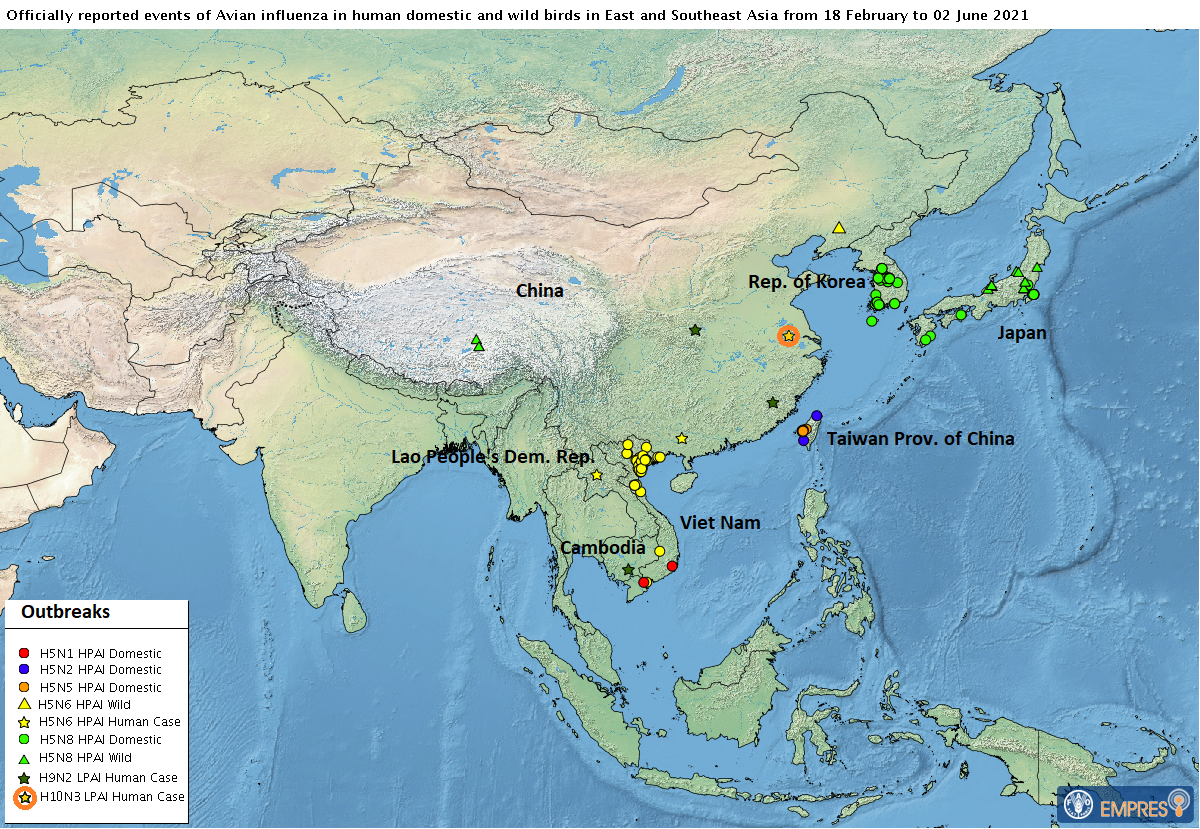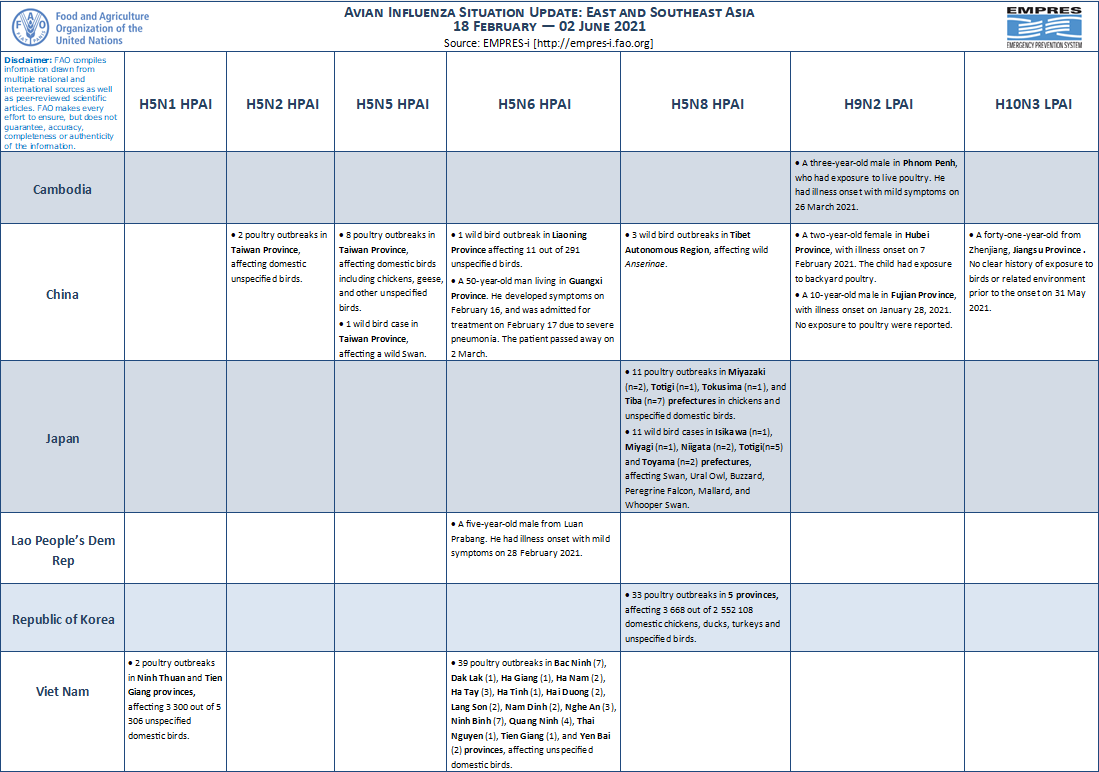FAO/EMPRES-AH is constantly monitoring the avian influenza situation worldwide and compiles information from multiple national and international sources as well as peer-reviewed scientific articles. Close collaboration with country and regional offices, the implementation of avian influenza field surveillance projects, and networks of expertise like OIE/FAO’s OFFLU (www.offlu.net) provide access to timely information on outbreaks, surveillance findings, and genetic similarities of circulating viruses or their virological features. This information is stored in the EMPRES Global Animal Disease Information System (EMPRES-i), a database that can be accessed online at empres-i.fao.org.

Avian Influenza in East and Southeast Asia from 18 February to 02 June 2021 ©EMPRES-i
During the period 18 February to 2 June 2021, five highly pathogenic avian influenza (HPAI) virus subtypes (H5N1, H5N2, H5N5, H5N6, and H5N8) and two low pathogenic avian influenza (LPAI) virus subtypes (H9N2 and H10N3) have been reported in East and South-East Asia. Two H5N1 HPAI outbreaks were reported in smallholder poultry farms in Ninh Thuan and Tien Giang provinces in Viet Nam affecting 3 300 out of 5 306 unspecified domestic birds. In addition, 39 H5N6 HPAI outbreaks were reported in Viet Nam in fifteen different provinces affecting unspecified domestic birds while China reported one H5N6 HPAI outbreak affecting 11 out of 291 wild birds in Liaoning Province. Taiwan Province, China reported two H5N2 HPAI and eight H5N5 HPAI outbreaks in domestic birds including chickens, ducks, and geese, as well as one H5N5 HPAI detection in a wild Swan.
Although number of outbreak reports decreased over the last month, H5N8 HPAI continues to circulate in East Asia, with 11 poultry outbreaks reported across four prefectures in Japan, and 33 poultry outbreaks reported in five provinces in Republic of Korea affecting domestic chickens, ducks, turkeys and unspecified birds. In addition, 11 detections of H5N8 HPAI virus were reported in wild bird species in Japan including Buzzard, Peregrine Falcon, Mallard, Ural Owl, and Whooper Swan, and during May 2021 three H5N8 HPAI outbreaks were observed in wild Anserinae populations in Tibet Autonomous Region, China.
Furthermore, Lao People’s Democratic Republic reported its first A(H5N6) human infection in April 2021, while China reported an additional A(H5N6) human case in Guangxi Province who died from the disease complications in March 2021. Three A(H9N2) human cases were reported since 17 February 2021, one in Phnom Penh, Cambodia, and two in China in Fujian and Hubei provinces, all occurring in children.
Importantly, China reported for the first time an A(H10N3) human infection in Jiangsu Province. The case is a 41-year-old male with no clear history of exposure to poultry or related environment. In the past, human infections caused by H10 subtypes have been rare and sporadic with H10N7 detections in humans in Egypt (2004), Australia (2010), and H10N8 human infections in China in 2013.
Highly pathogenic H5N1, H5N2, H5N5, H5N6, and H5N8 viruses have demonstrated the ability to spread via migratory water birds.
We consider avian influenza activity to be lower in the period from March to June, therefore reports of outbreaks in poultry or detections in wild birds and humans are expected to decrease over the coming months in the region.

![]()
![]()




